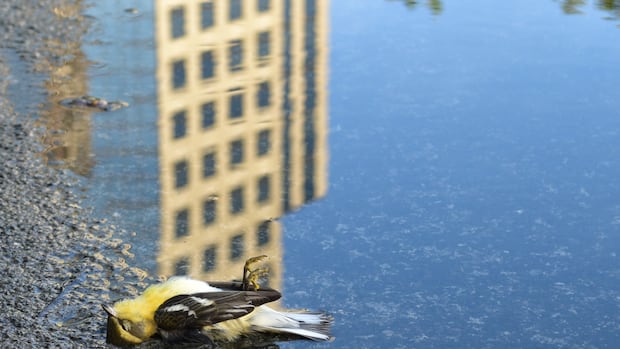
"Most did not survive. It's an easy problem to fix, according to Michael Mesure, executive director of Fatal Light Awareness Program (FLAP). But a lack of incentive means few make the changes required, he told CBC Toronto. During a bird-patrol outing in Markham on Wednesday, Mesure found 20 birds around just one building in Markham. He gingerly placed the only survivor of the bunch in a paper bag with plans to take it to a rehabilitation centre."
"We've got to get these buildings retrofitted if we ever stand a chance at really getting on top of this problem, he said. The City of Toronto did not respond to CBC's request for comment in time for the deadline outlined in the request. Culprit buildings have windows reflecting greenery In the last 50 years, North American bird populations have dropped by billions, according to a 2019 report in the journal Science."
More than 300 birds that had crashed into windows across the Greater Toronto Area were found during one patrol, and most did not survive. Fatal Light Awareness Program says collisions are easy to prevent but few building owners act due to lack of incentive. Inspectors found 20 birds around one Markham building; the sole survivor was placed in a paper bag for transport to a rehabilitation centre. Toronto's 2022 regulation requires collision deterrence on certain new builds but excludes most residential and existing buildings, and the standard is not enforced, leaving no completed city buildings adhering to guidelines. Migratory season and reflective windows increase collision risk and contribute to long-term bird population declines.
Read at www.cbc.ca
Unable to calculate read time
Collection
[
|
...
]